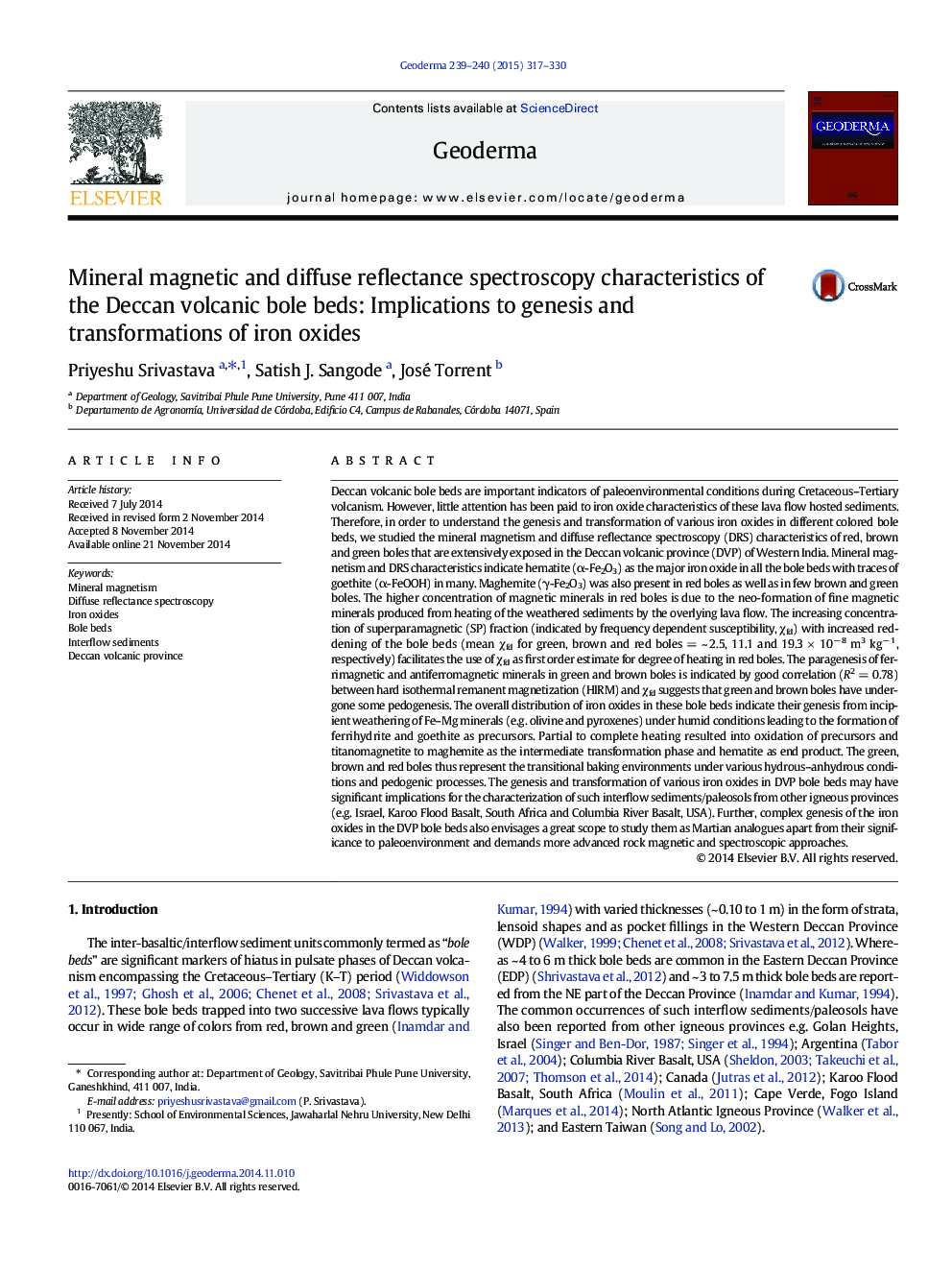| کد مقاله | کد نشریه | سال انتشار | مقاله انگلیسی | نسخه تمام متن |
|---|---|---|---|---|
| 6408687 | 1629466 | 2015 | 14 صفحه PDF | دانلود رایگان |
- The iron oxide characteristics of different color (i.e. red, brown and green) interflow sediments/boles of DVP are studied.
- The magnetic and DRS study show variable concentration of hematite, goethite and maghemite in different color bole beds.
- The variable concentration of iron oxides in various color boles is due to differential heating and pedogenic environment.
- Iron oxide transformation pathways in boles speculate a great scope of study as analogue to heated Martian soil/sediments.
Deccan volcanic bole beds are important indicators of paleoenvironmental conditions during Cretaceous-Tertiary volcanism. However, little attention has been paid to iron oxide characteristics of these lava flow hosted sediments. Therefore, in order to understand the genesis and transformation of various iron oxides in different colored bole beds, we studied the mineral magnetism and diffuse reflectance spectroscopy (DRS) characteristics of red, brown and green boles that are extensively exposed in the Deccan volcanic province (DVP) of Western India. Mineral magnetism and DRS characteristics indicate hematite (α-Fe2O3) as the major iron oxide in all the bole beds with traces of goethite (α-FeOOH) in many. Maghemite (γ-Fe2O3) was also present in red boles as well as in few brown and green boles. The higher concentration of magnetic minerals in red boles is due to the neo-formation of fine magnetic minerals produced from heating of the weathered sediments by the overlying lava flow. The increasing concentration of superparamagnetic (SP) fraction (indicated by frequency dependent susceptibility, Ïfd) with increased reddening of the bole beds (mean Ïfd for green, brown and red boles = ~ 2.5, 11.1 and 19.3 Ã 10â 8 m3 kgâ 1, respectively) facilitates the use of Ïfd as first order estimate for degree of heating in red boles. The paragenesis of ferrimagnetic and antiferromagnetic minerals in green and brown boles is indicated by good correlation (R2 = 0.78) between hard isothermal remanent magnetization (HIRM) and Ïfd suggests that green and brown boles have undergone some pedogenesis. The overall distribution of iron oxides in these bole beds indicate their genesis from incipient weathering of Fe-Mg minerals (e.g. olivine and pyroxenes) under humid conditions leading to the formation of ferrihydrite and goethite as precursors. Partial to complete heating resulted into oxidation of precursors and titanomagnetite to maghemite as the intermediate transformation phase and hematite as end product. The green, brown and red boles thus represent the transitional baking environments under various hydrous-anhydrous conditions and pedogenic processes. The genesis and transformation of various iron oxides in DVP bole beds may have significant implications for the characterization of such interflow sediments/paleosols from other igneous provinces (e.g. Israel, Karoo Flood Basalt, South Africa and Columbia River Basalt, USA). Further, complex genesis of the iron oxides in the DVP bole beds also envisages a great scope to study them as Martian analogues apart from their significance to paleoenvironment and demands more advanced rock magnetic and spectroscopic approaches.
Journal: Geoderma - Volumes 239â240, February 2015, Pages 317-330
